Optimization and Security of Hazardous Waste Incineration Plants with the Use of a Heuristic Algorithm
Abstract
:1. Introduction
2. Materials and Methods
2.1. Assumptions of the Application Model
2.2. Algorithm for Selection of Components of the Input Material
- Setting the input parameters of the algorithm: M, I, nT, ξ, β1.
- Generating the starting population xk = (x1k, x2k, …, xnk), where xk є D, (k = 1, 2, …, M).
- Breakdown of the population into nT groups that will be combined in parallel.
- Finding the value of the objective function for each ant in the population for parallel computations.
- Determination of the best xbest solution in the population.
- Random generation of the shift vector dxk = (dx1k, dx2k, …, dxnk), where –βji ≤ dxjk ≤ βji (k = 1, 2, …, M).
- Generation of a new distribution of an ant colony xk = xbest + dxk, (k = 1, 2, …, M).
- Division of the new colony into nT groups counted in parallel.
- Determining the value of the objective function for a new ant colony—parallel calculations.
- Determining the best solution in the current ant colony. In case of a better solution than xbest, it is assumed as a new solution xbest.
- Steps 6 to 10 are repeated I times.
- Decreasing the values of the parameters βji+1: βji+1 = ξ · βji.
- Steps 6 to 12 are repeated I times.
- number of ants M = 30;
- number of pheromone spots L = 10
- number of iterations I = 30
3. Results
- Creating a mixture that meets the given parameters;
- Compatibility with the database of waste incineration plant;
- Selecting waste for a batch of input material;
- Updating resources after selection;
- Generating reports.
3.1. Creating a Mixture That Meets the Given Parameters
3.2. Compatibility with the Database of Waste Incineration Plant
3.3. Selecting Waste for a Batch of Input Material
3.4. Updating Resources after Selection
3.5. Generating Reports
4. Discussion
- Automatic creation of an input portion, which reduces the workload.
- Data archiving enabling the comparison of individual types of hazardous waste with generated emissions of exhaust gases.
5. Conclusions
Author Contributions
Funding
Institutional Review Board Statement
Informed Consent Statement
Data Availability Statement
Conflicts of Interest
References
- Lemieux, P.; Boe, T.; Tschursin, A.; Denison, M.K.; Davis, K. Computational simulation of incineration of chemically and biologically contaminated wastes. J. Air Waste Manag. Assoc. 2021, 71, 462–476. [Google Scholar] [CrossRef] [PubMed]
- Bujak, J.; Sitarz, P.; Nakielska, M. Multidimensional analysis of meat and bone meal (Mbm) incineration process. Energies 2021, 13, 5787. [Google Scholar] [CrossRef]
- Zhao, H.-L.; Wang, L.; Liu, F.; Liu, H.-Q.; Zhang, N.; Zhu, Y.-W. Energy, environment and economy assessment of medical waste disposal technologies in China. Sci. Total Environ. 2021, 79620, 148964. [Google Scholar] [CrossRef]
- Wajda, A.; Jaworski, T. Research on the incineration process of the solid waste in a rotary kiln. Int. Multidiscip. Sci. GeoConference Surv. Geol. Min. Ecol. Manag. 2019, 19, 367–374. [Google Scholar] [CrossRef]
- Gajendra, K.; Shabina, K. Computational fluid dynamics of sponge iron rotary kiln. Case Stud. Therm. Eng. 2017, 9, 14–27. [Google Scholar]
- Meyer, V.; Pisch, A.; Penttila, K.; Koukkari, P. Computation of steady state termochemistry in rotary kilns: Application to the cement clinker manufacturing process. Chem. Eng. Res. Des. 2016, 115, 335–347. [Google Scholar] [CrossRef]
- Njeng, A.; Vitu, S.; Clausse, M.; Dirion, J.-L.; Debacq, M. Wall-to-solid heat transfer coefficient in flighred rotary kilns: Experimental determination and modelling. Exper. Therm. Fluid Sci. 2018, 91, 197–213. [Google Scholar] [CrossRef] [Green Version]
- Martha, T.A.; Li, V. Refractory solutions from International hazardous waste incineration experience. In Proceedings of the 37th International Conference on Thermal Treatment Technologies and Hazardous Waste Combustors, IT3/HWC 2019, League City, TX, USA, 2–3 October 2019. [Google Scholar]
- Villalba Weinberg, A.; Varona, C.; Chaucherie, X.; Goeuriot, D.; Poirier, J. Extending refractory lifetime in rotary kilns for hazardous waste incineration. Ceram. Int. 2016, 42, 17626–17634. [Google Scholar] [CrossRef]
- Schlegel, E. Die alkalikorrosion feuerfester baustoffe, teil 1-eigenschaft von Alkalien, korrodierende stoffe, ersatzbrennstoffe. Keram. Z. 2018, 70, 48–52. [Google Scholar] [CrossRef]
- Pieper, C.; Wirtz, S.; Schaefer, S.; Scherer, V. Numerical investigation of the impact of coating layers on RDF combustion and clinker properties in rotary cement kilns. Fuel 2021, 283, 118951. [Google Scholar] [CrossRef]
- Włodarczyk-Sielicka, M.; Połap, D. Automatic classification using machine learning for non-conventional vessels on inland waters. Sensors 2019, 19, 3051. [Google Scholar] [CrossRef] [PubMed] [Green Version]
- Brociek, R.; Chmielowska, A.; Słota, D. Comparison of the probabilistic ant colony optimization algorithm and some iteration method in application for solving the inverse problem on model with the caputo type fractional derivative. Entropy 2020, 22, 555. [Google Scholar] [CrossRef] [PubMed]
- Mohamadi, H.E.; Kara, N.; Lagha, M. Efficient algorithms for decision making and coverage deployment of connected multi-low-altitude platforms. Expert Syst. Appl. 2021, 184, 115529. [Google Scholar] [CrossRef]
- Brociek, R.; Słota, D. Application of real ant colony optimization algorithm to solve space and time fractional heat conduction inverse problem. Inf. Technol. Control 2017, 46, 5–16. [Google Scholar] [CrossRef] [Green Version]
- Azadi Moghaddam, M.; Kolahan, F. Modeling and optimization of A-GTAW process using back propagation neural network and heuristic algorithms. Int. J. Press. Vess. Piping 2021, 194, 104531. [Google Scholar] [CrossRef]

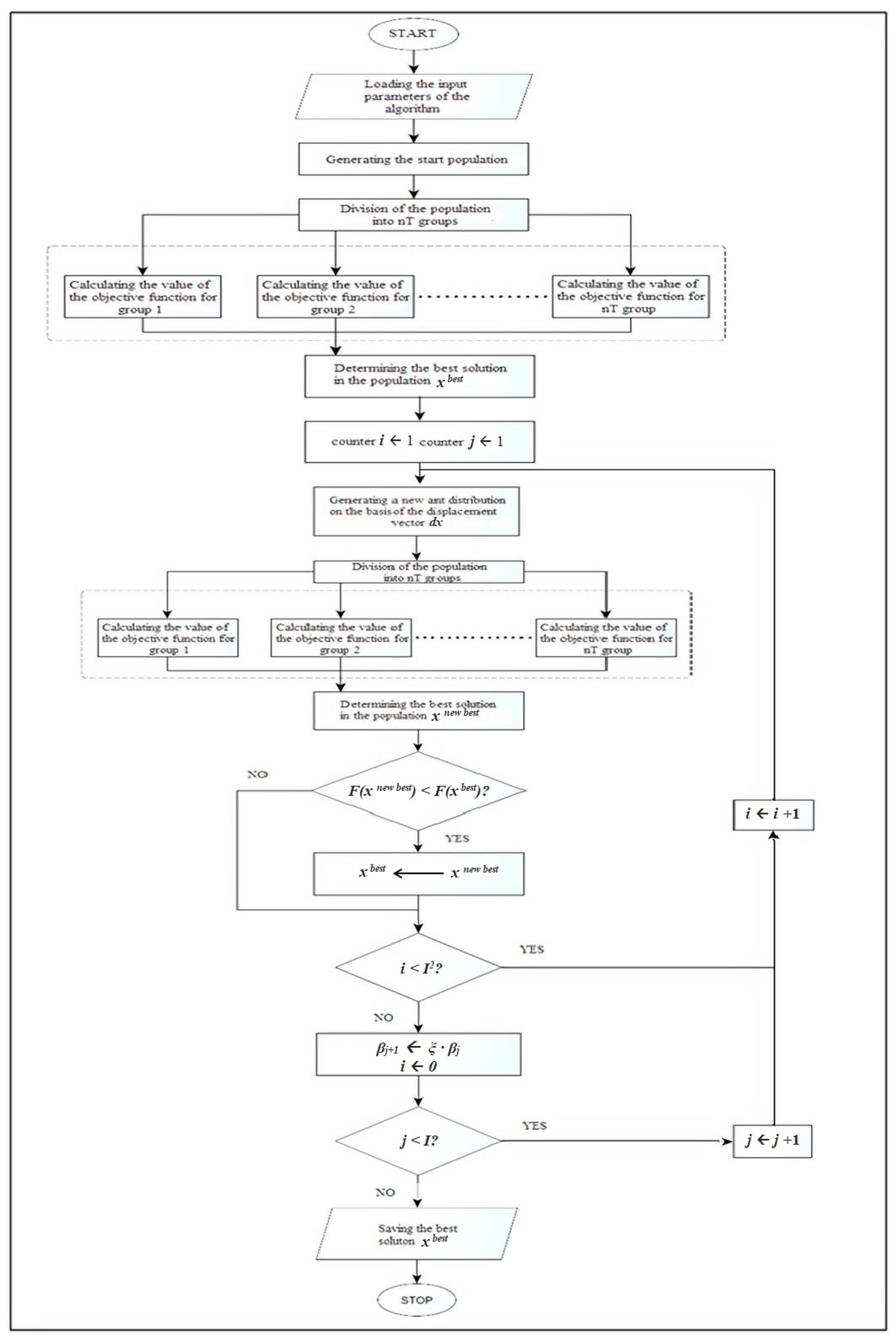
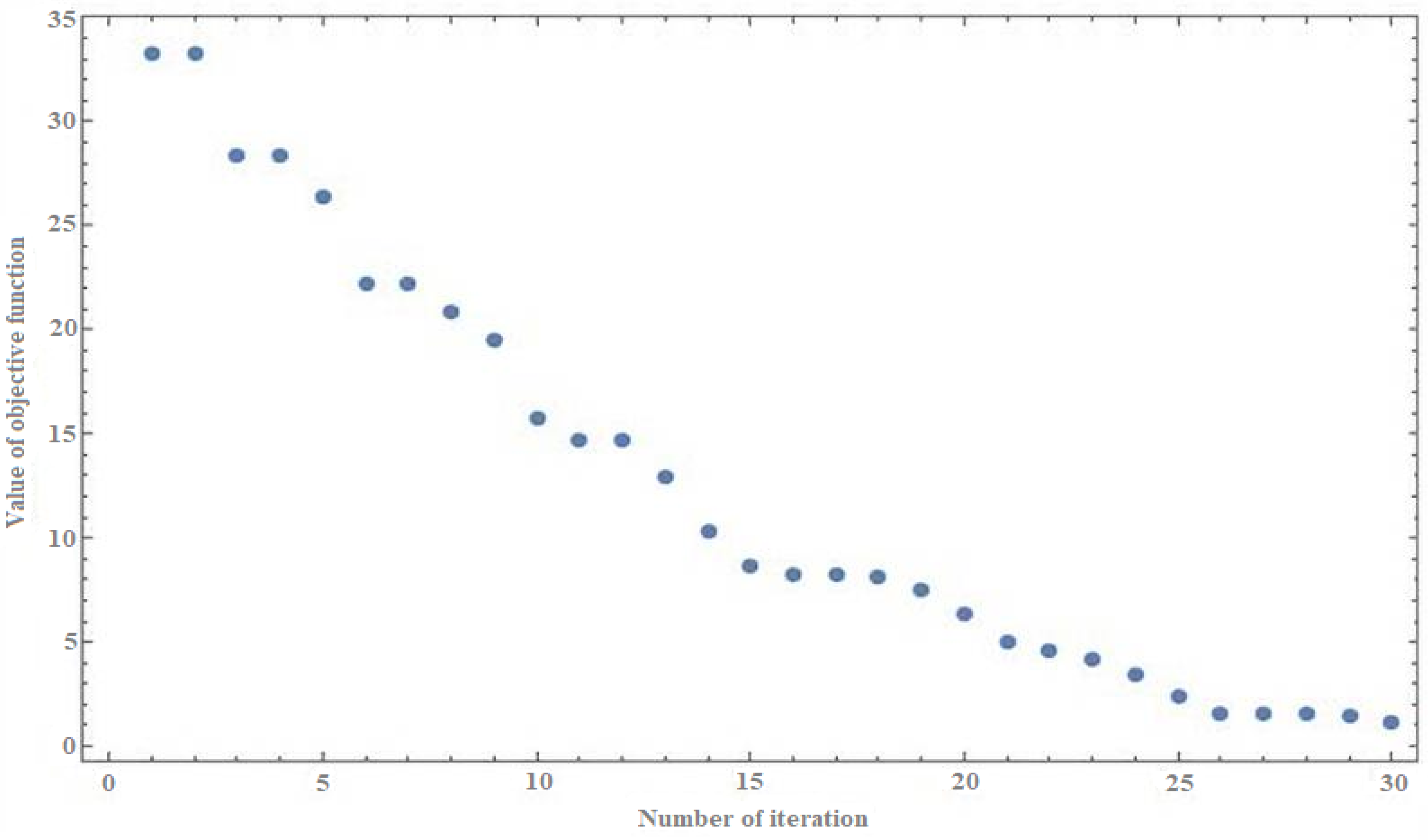
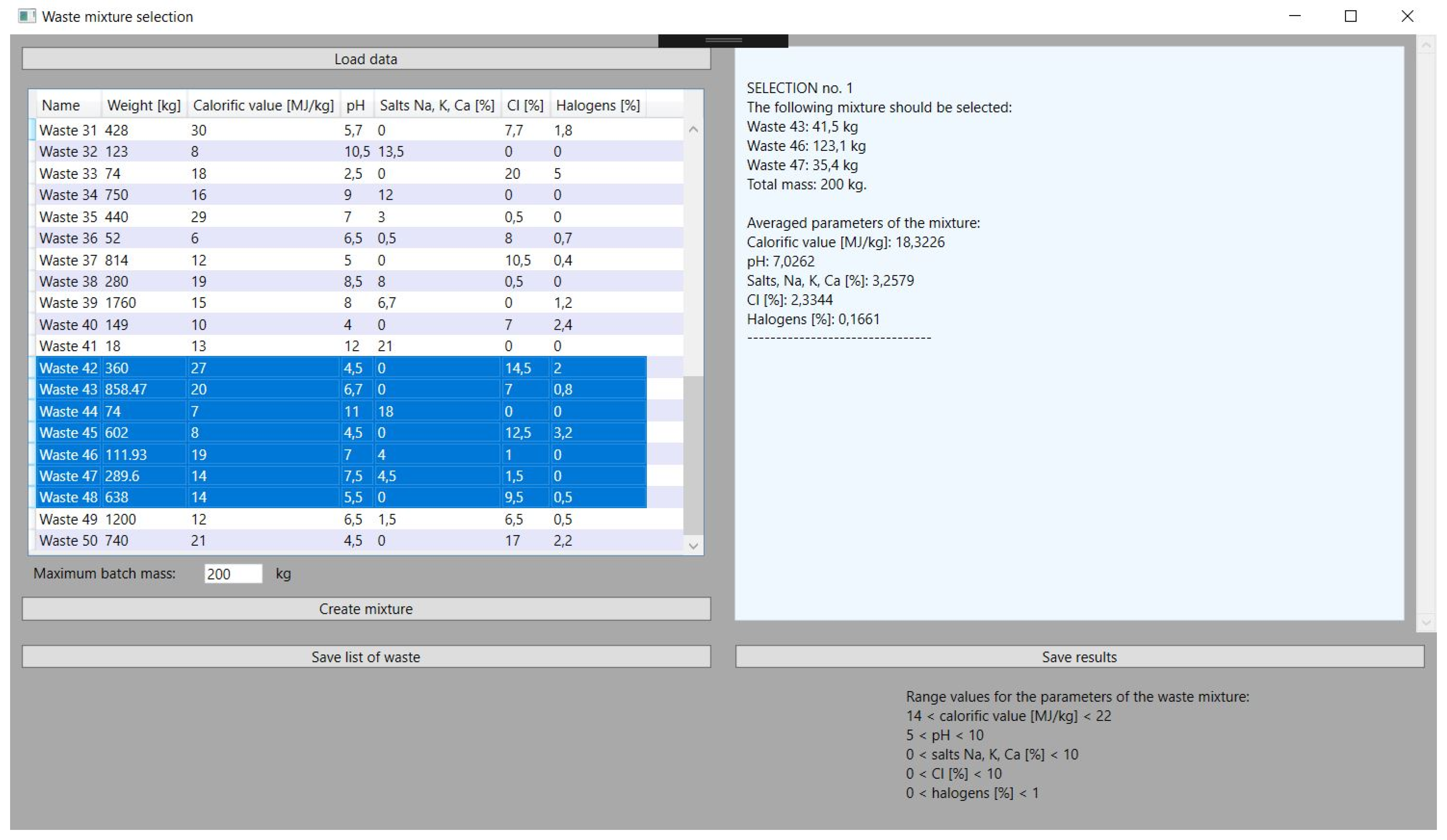
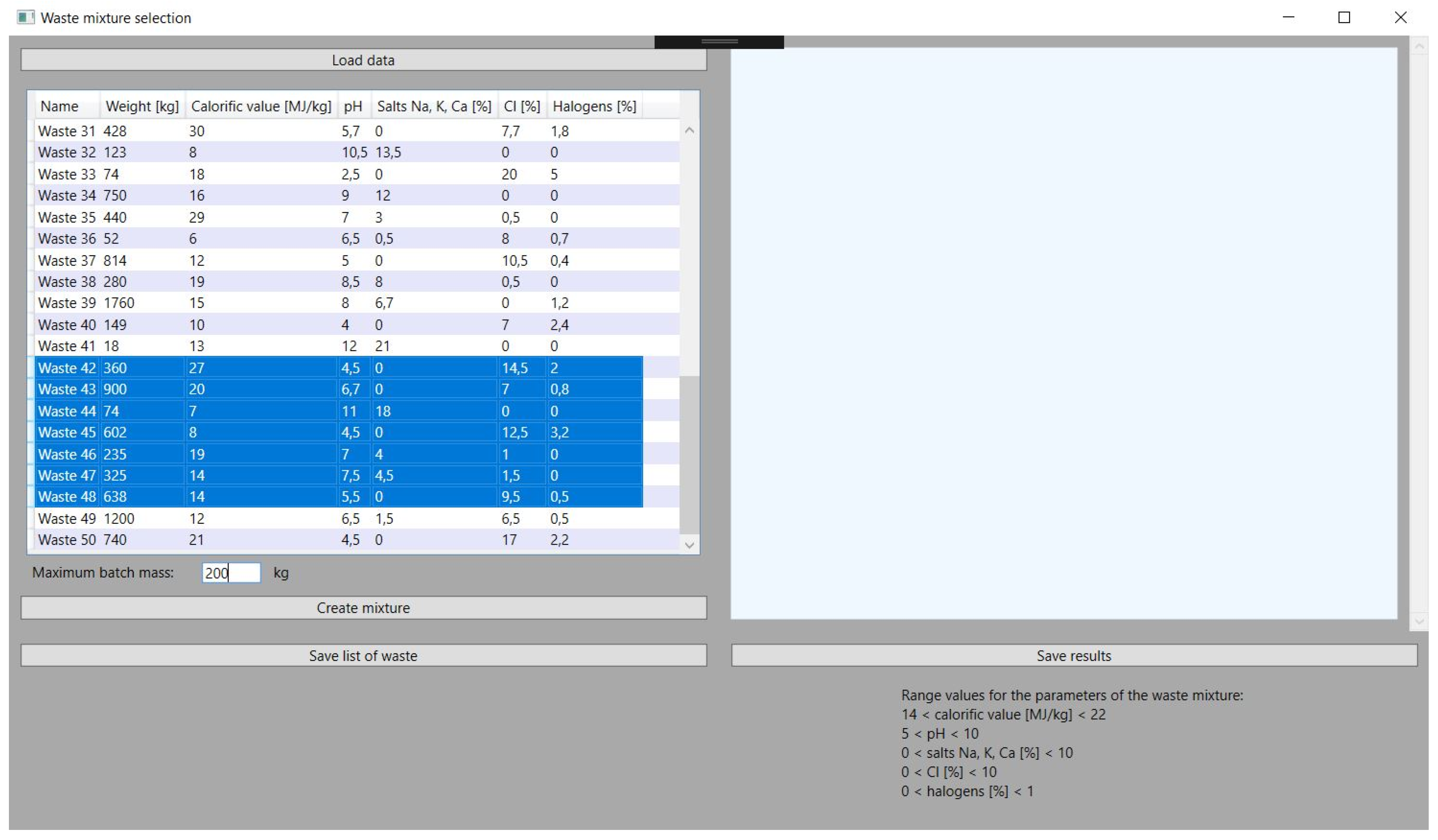
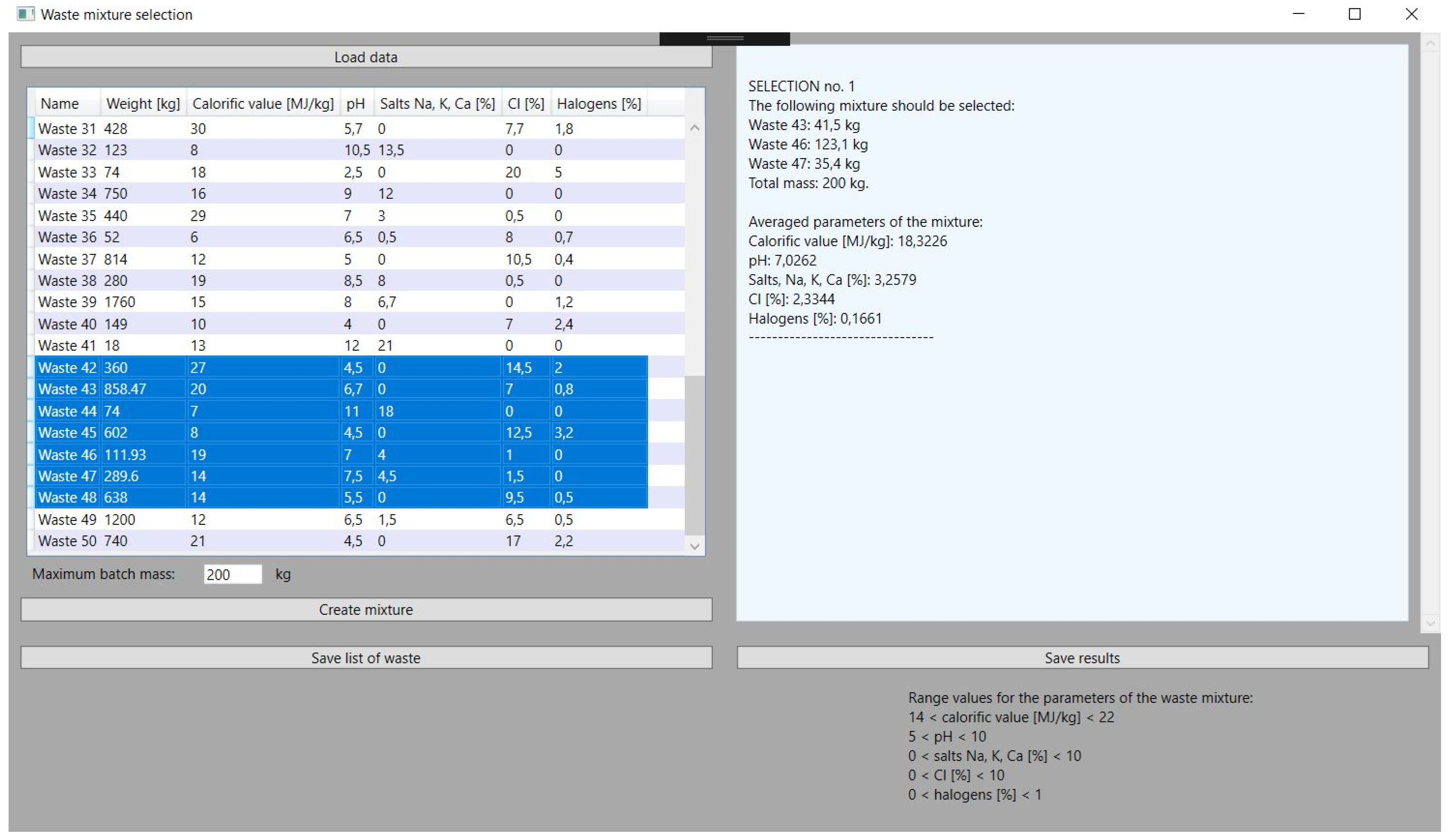
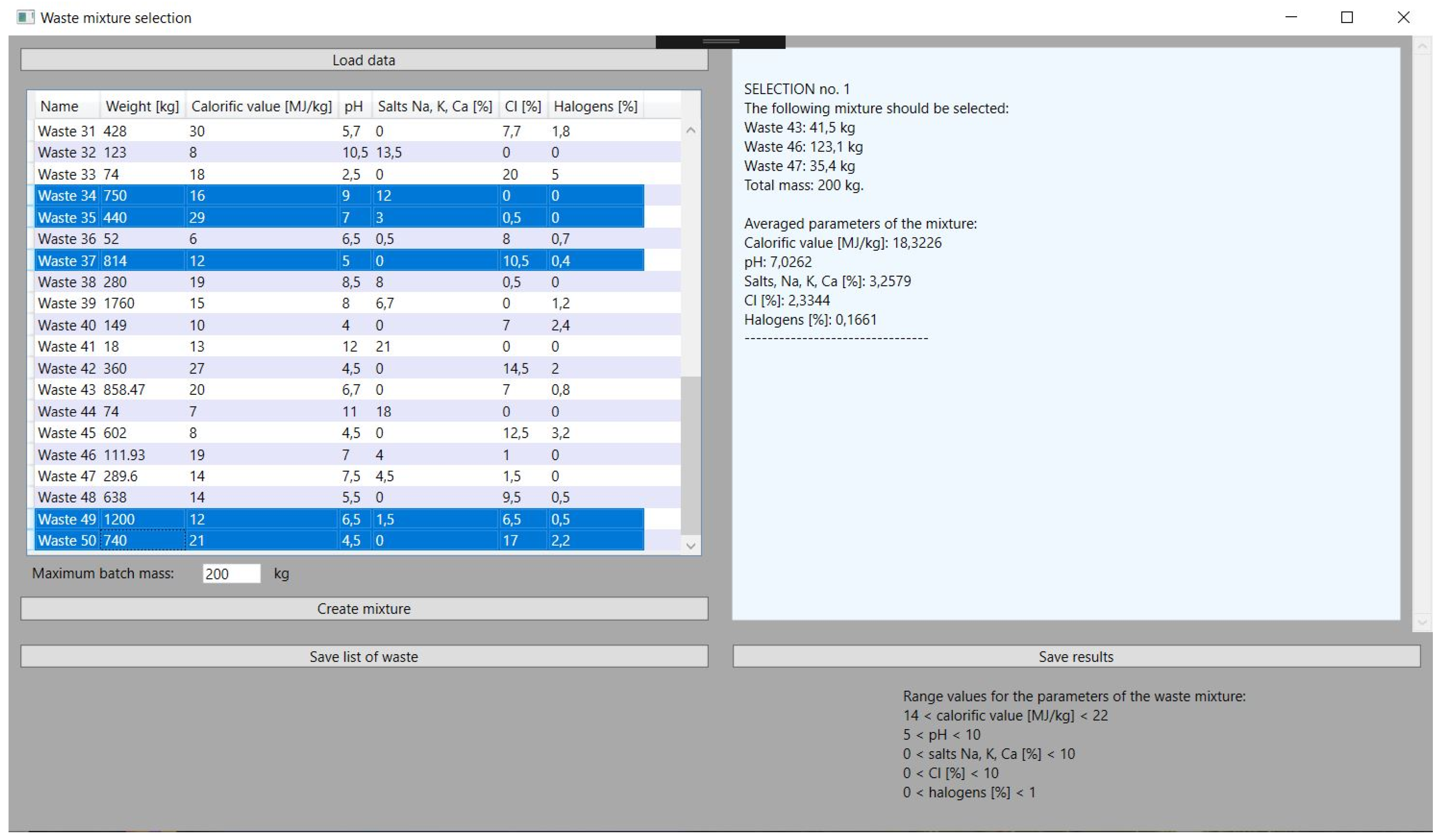
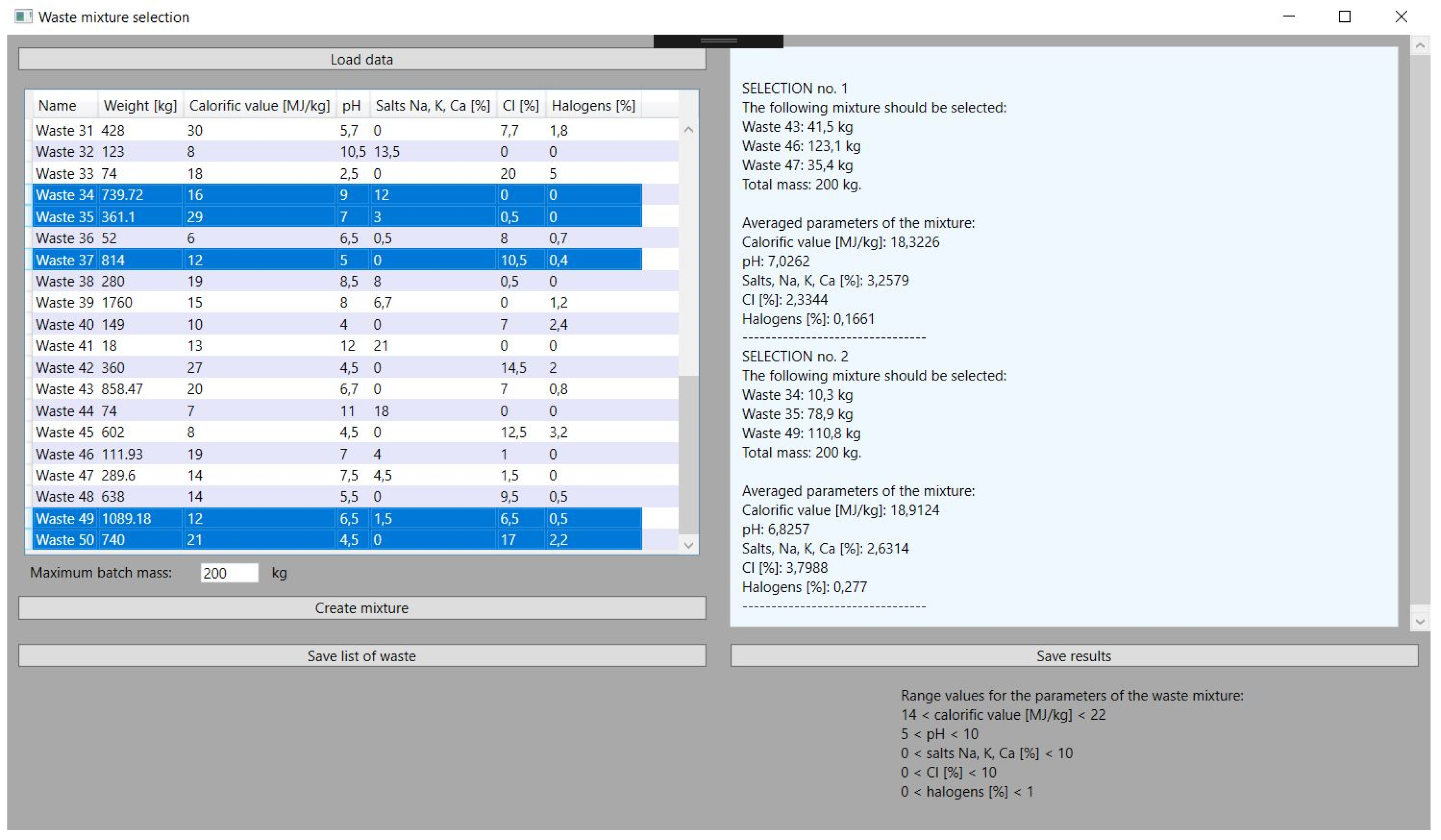
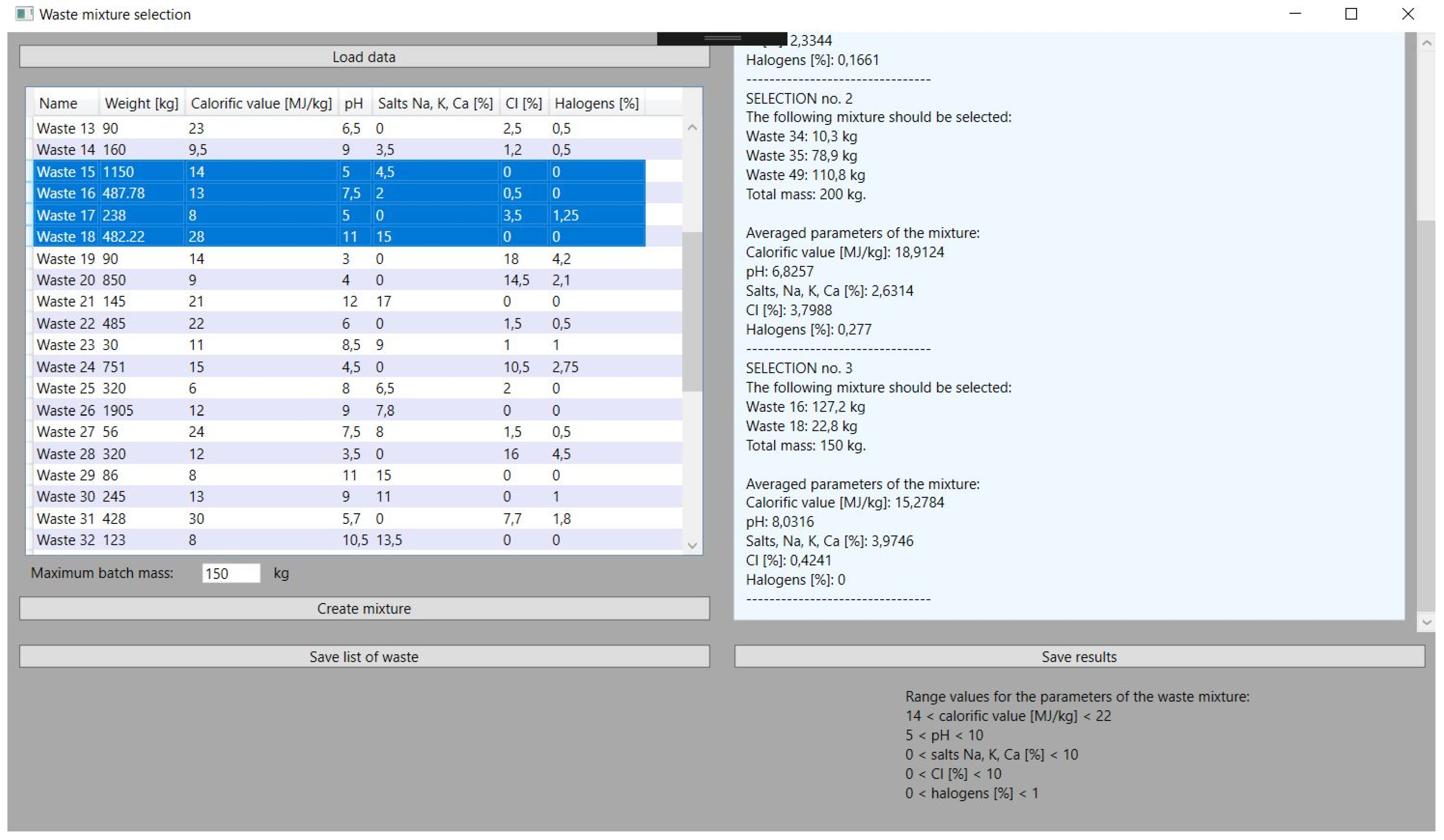
| Parameter | Symbol | Unit | Value Range | Reference Value |
|---|---|---|---|---|
| Calorific value of waste | P1 | MJ/kg | 14–22 | 18 |
| pH | P2 | - | 5–10 | 7.5 |
| Content of Cl | P3 | % mass | <10 | 1 |
| Content of salts Na, K, Ca | P4 | % mass | <10 | 1 |
| Content of F, I, Br | P5 | % mass | <1 | 0.1 |
Publisher’s Note: MDPI stays neutral with regard to jurisdictional claims in published maps and institutional affiliations. |
© 2021 by the authors. Licensee MDPI, Basel, Switzerland. This article is an open access article distributed under the terms and conditions of the Creative Commons Attribution (CC BY) license (https://creativecommons.org/licenses/by/4.0/).
Share and Cite
Wajda, A.; Jaworski, T. Optimization and Security of Hazardous Waste Incineration Plants with the Use of a Heuristic Algorithm. Sensors 2021, 21, 7247. https://doi.org/10.3390/s21217247
Wajda A, Jaworski T. Optimization and Security of Hazardous Waste Incineration Plants with the Use of a Heuristic Algorithm. Sensors. 2021; 21(21):7247. https://doi.org/10.3390/s21217247
Chicago/Turabian StyleWajda, Agata, and Tomasz Jaworski. 2021. "Optimization and Security of Hazardous Waste Incineration Plants with the Use of a Heuristic Algorithm" Sensors 21, no. 21: 7247. https://doi.org/10.3390/s21217247
APA StyleWajda, A., & Jaworski, T. (2021). Optimization and Security of Hazardous Waste Incineration Plants with the Use of a Heuristic Algorithm. Sensors, 21(21), 7247. https://doi.org/10.3390/s21217247






